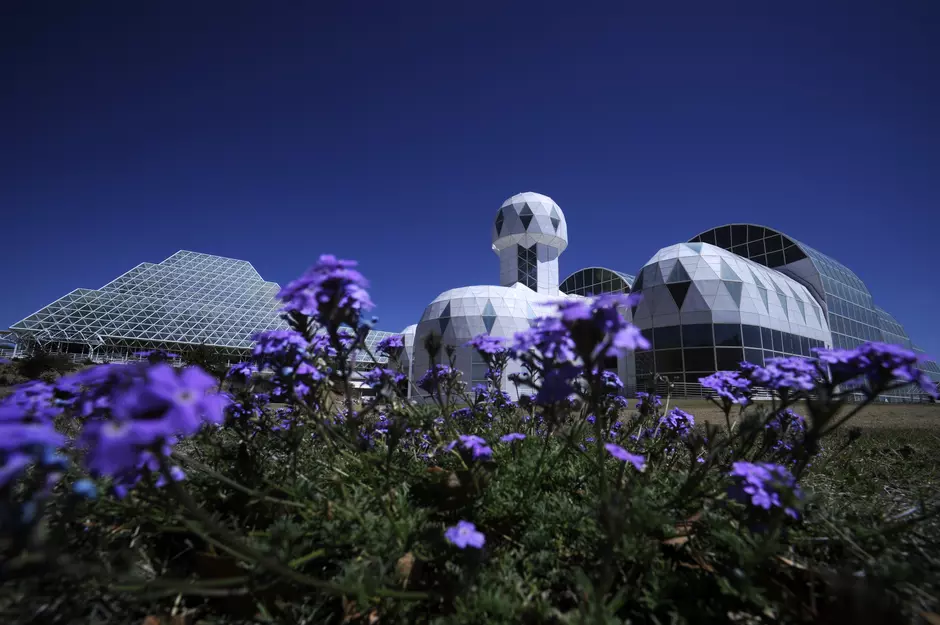
Environment and Biodiversity
Place
Arizona, United States
Sponsor
Thierry Vandevelde
Grant(s)
50,000 € to the Board of Administration at 2011/01/31
Project leader
Spread over an area of three acres (1.27 ha), Biosphere 2 is the world's largest closed ecological system. Various ecosystems have been recreated there: a humid tropical forest, an ocean with its coral reef, a mangrove swamp, a savanna, a desert, a plot dedicated to agriculture, a human habitat with its private neighborhoods and its workplaces.
The sphere was built in the late 1990s to assess the feasibility of an identical structure on Mars, in the eventuality of space settlement. Its ambitious promoters dubbed it Biosphere 2, the Earth being Biosphere 1. Two missions were carried out in the sealed dome in which teams of scientists, researchers and doctors were isolated. The first mission lasted two years, but had to be interrupted because of the progressive drop in the oxygen content in the sphere, which could not be maintained to create a livable atmosphere. Disagreements within the team aborted the second mission after six months. These experiments proved the extreme difficulty of stabilizing an ecosystem, and the cordial relations of a human team working in a closed circuit!
In 2007, the University of Arizona decided to incorporate Biosphere 2 into its Earth Research Program. B2 is in fact a unique tool for conducting investigations in an intermediate environment between the laboratory and the field. Today, a hundred researchers are working on the site on two main research topics: water and climate; and energy and sustainable development.
Implementing joint projects tested in Biosphere 2
Since July 2010, Thierry Vandevelde, executive officer of the Veolia Foundation, is a member of the Biosphere 2 advisory board. The scientific teams of the University of Arizona and those of the Foundation are working on common subjects such as water, energy and sustainable development. Their operational methodology approaches are also similar (innovation, creation of pilot projects, field appraisals).
Many avenues of scientific cooperation could therefore be developed, around subjects such as the carbon footprint, wastewater treatment, the development of renewable energies (especially photovoltaic), the optimization of sanitation solutions, and the analysis of biodiversity, particularly by mathematical modeling (associated with the Ecole Polytechnique chair for "mathematical modeling and biodiversity", created with Veolia Environnement and the French Museum of National History).
In order to draw up a program of scientific and operational cooperation appropriate to the expectations and expertise of the partners, a workshop is to be organized by the Veolia Foundation in May 2011. It will gather together University of Arizona researchers and Veolia Environnement teams in a program of voluntary sponsorship (scientists of the Research and Innovation Teams, specialists in sustainable development, engineers from Veolia Water North America, etc.). Outside stakeholders (CNRS, Ecole Polytechnique, EDF) will also be involved. The aim of the workshop is to assess the feasibility of cooperation and, if applicable, to determine the strategic guidelines required to implement joint projects.

